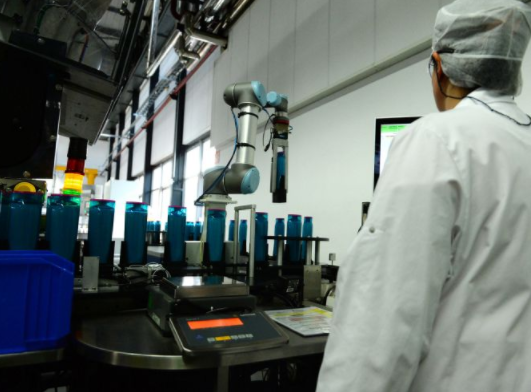Recent research shows that there will be 2.6 million active industrial robots by 2019, an increase of 1 million units a few years ago. More and more manufacturers are actively embracing all the opportunities that industrial robots bring in Industry 4.0. Big data is reported to be as important to Industry 4.0 as industrial robots. Many artificial intelligence (AI)-driven industrial robots use advanced data sets to monitor day-to-day operations, provide advice, and even learn from mistakes. Robots are particularly popular in predictive maintenance. Automated robots can monitor the state of production hardware and compare it to the latest trends, industry benchmarks, and manufacturer specifications to diagnose a machine before it fails, allowing technicians to intervene before they go wrong. Robots don't necessarily replace the work of professionals. While monotonous, dangerous work is often assigned to robots, some manufacturers find robots more beneficial in a collaborative environment. Collaborative robots can work with humans everywhere in the factory or warehouse to handle more challenging tasks, such as lifting the engine block, providing workers with better mounting parts and angles to tighten the bolts. They also transport heavy or hazardous substances under the supervision of human supervisors. Recent projections show that collaborative robots will account for more than 30% of all industrial robot sales worldwide by 2025. Since the collaborative robots accounted for only 3% in 2016, it is certain that more manufacturers will actively adopt collaborative robots. Next-generation robots are increasingly appearing in every corner of the plant, including production lines. The robot's arc-on time is 75%, while the welding industry's arcing time is 50%. Not only are they faster and more accurate than human opponents, they also extend working hours and never require vacations. This is a great advantage for the welding company as the robot can work longer. Because the industry estimates that there will be a shortage of 290,000 professional welders in the next few years, one of the ways to bridge this gap is to introduce robots. Welding often requires advanced training and extensive safety precautions. Robots eliminate the need for highly trained professionals while minimizing the risk of accidents at work. Older robots are large, bulky, and expensive for many manufacturers, but next-generation robots are smaller, more efficient, and more affordable. They still use the same number of sensors, sometimes even more. But all sensors are much smaller than they were a few years ago. This change not only makes it easier for them to enter factories with limited space, but ultimately reduces overall costs. As robots' work efficiency and operational sustainability have improved, it will inevitably replace some manufacturing workers, but this is a natural process for robots to transform into a broader and more responsible role in the workplace. For human employees, this is not bad news, because Industry 4.0 still offers many opportunities for qualified and experienced people. The remaining workers may be promoted to higher positions in different divisions of the company or factory. Multi-Port Usb Charger,5V2A Usb Charger,Mobile Phone Charger,Multi Ports Usb-A Charging Hub shenzhen ns-idae technology co.,ltd , https://www.best-charger.com